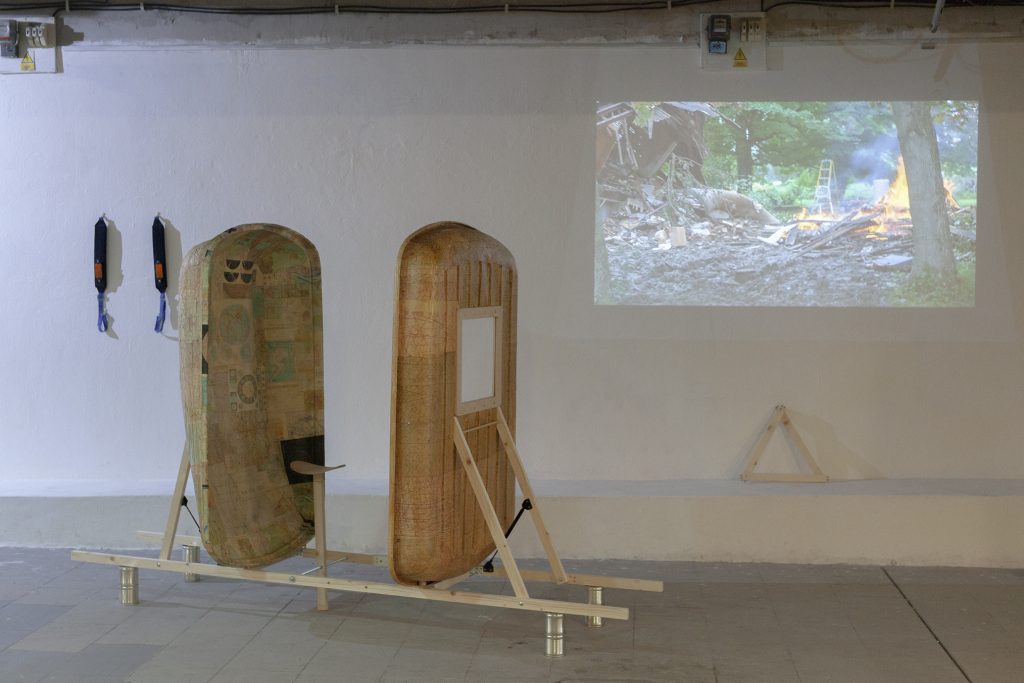
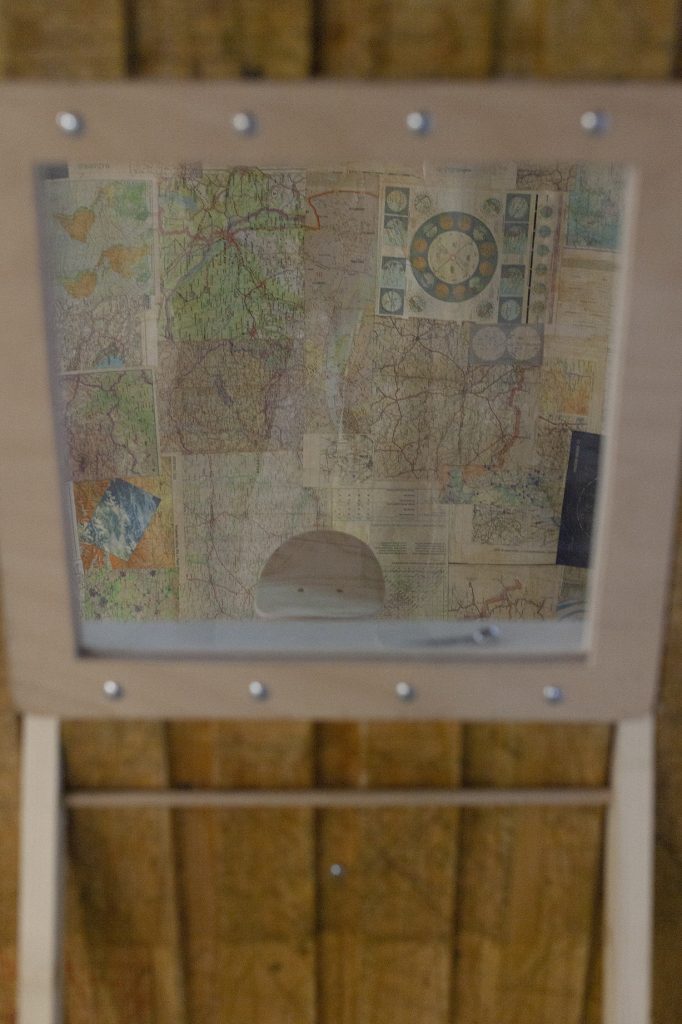
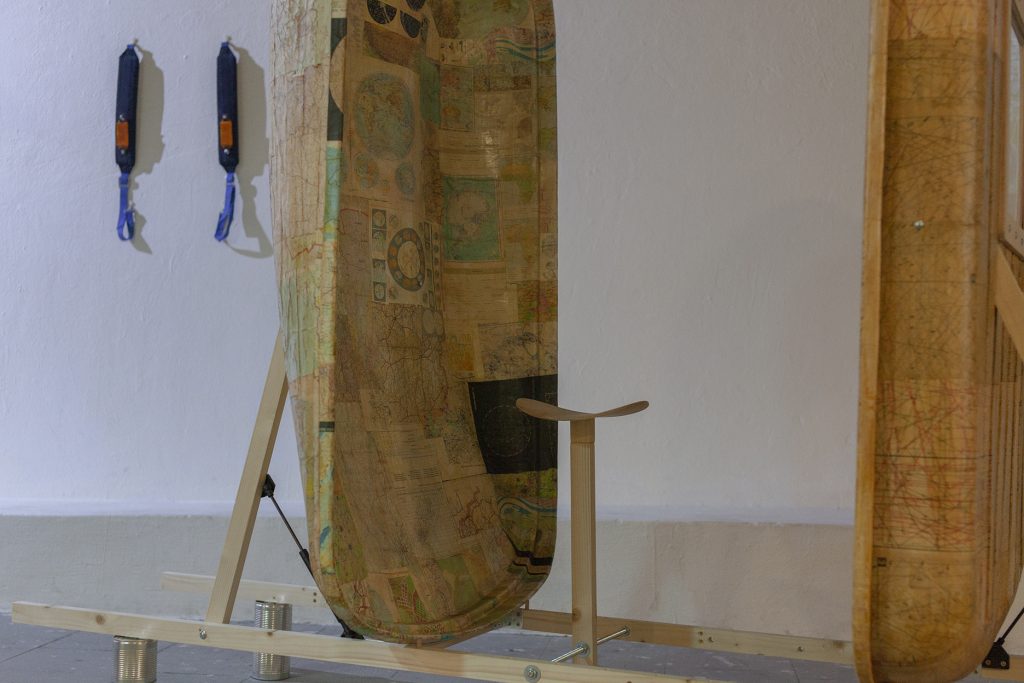
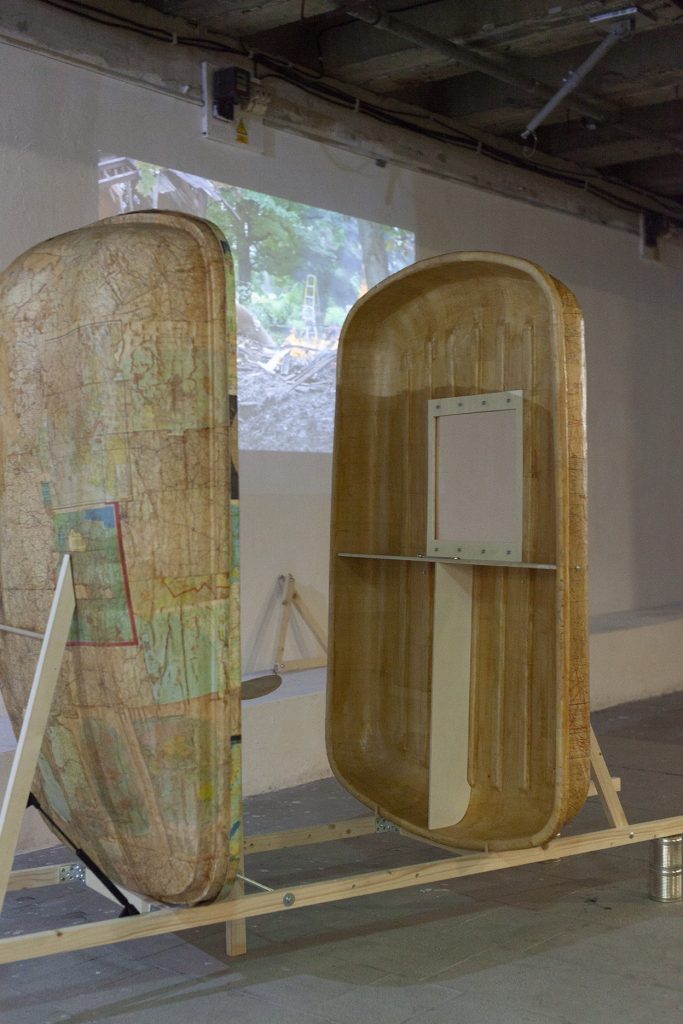
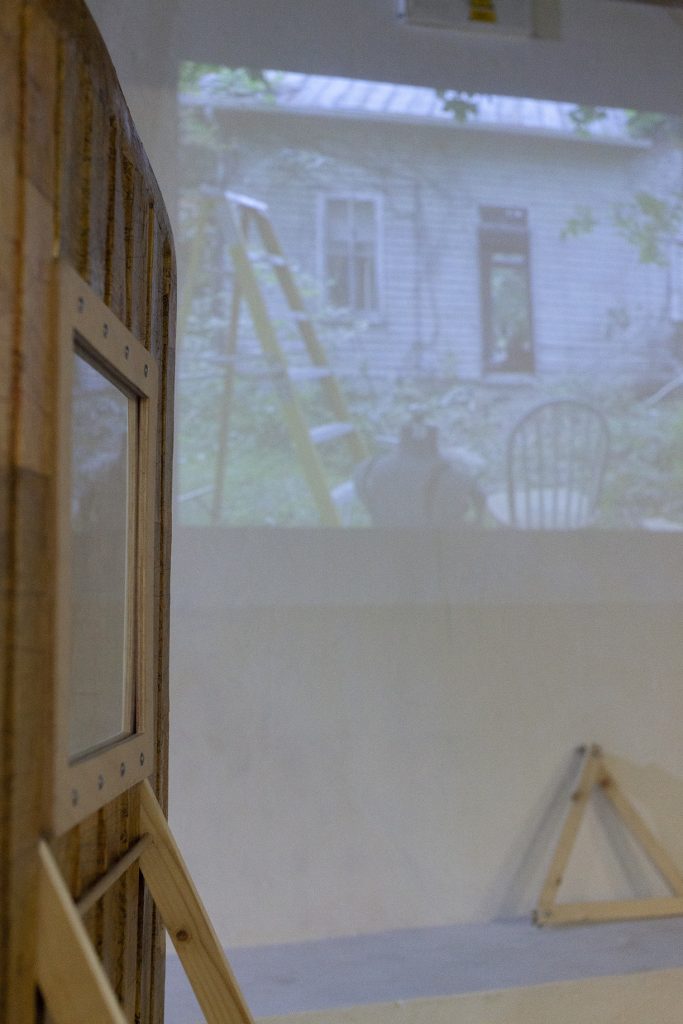

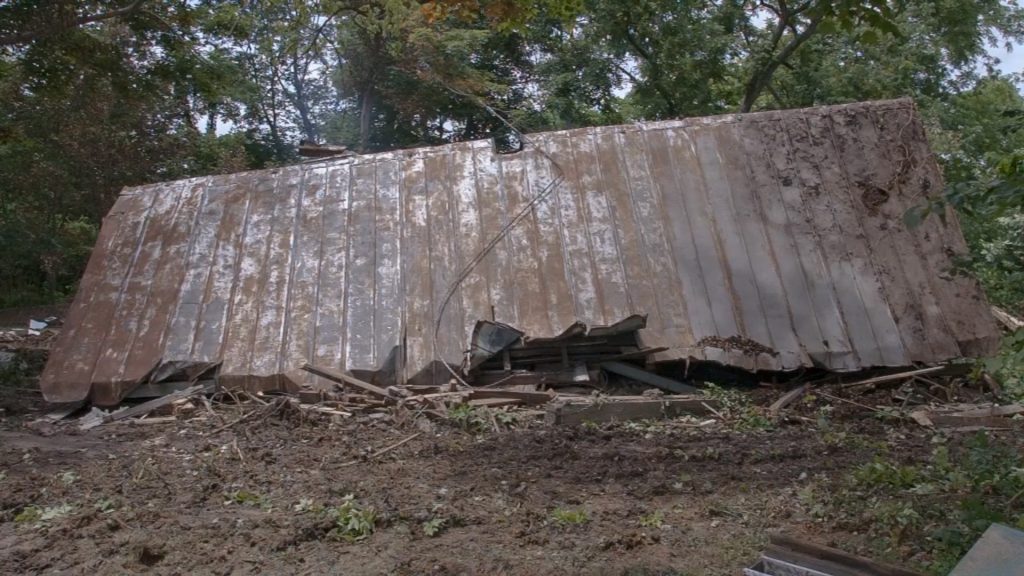
Screens of family house built in 1890. Moores Hill Indiana USA, Video duration 1:46 min.
Nemyslieť chvíľu módom tvoriť umenie, odísť na určitý čas do kultúrne odlišného prostredia, prejsť
ním, spoznávať ho náhodne bez časomiery, alebo presne podľa súradníc vyhľadávať konkrétne
miesta-dejiská, vykonávať v nich prácu a na konci dňa vidieť výsledok. Po návrate do vlastnej reality,
keď sa človek mysľou vracia k týmto situáciám, vzniká pohnútka zhmotniť ich! Ako? A z čoho? Eko!
Inštalácia opisuje protichodnosť a prelínanie dvoch realít, jedna pevne ukotvená v štruktúrach
spoločenských konvencií a tá druhá krátkodobejšia, cestovateľská, sa jej zámerne vymyká. „Uniknúť
z jednej tou druhou“. Je postavená z nepredvídateľných situácií, prebývaní na rôznych miestach,
vykonávaní množstva rozličných prác, adaptácií na jazyk, jeho akcenty, komunitu, jej pravidlá,
pracovné tempo a existenčné provizórium. Tieto skúsenosti „okresávajú“ materiálne potreby
človeka.
Paradoxne však vynaložená snaha, plne nasadené pracovné tempo a aktivizmus našej konvenčnej
reality je štandardom veľmi príbuzná provizóriám tej cestovateľskej. Tomu svedčí aj spôsob, akým
dnes funguje bytová otázka generácie ľudí okolo 40, štátny bytový fond a nedostatočná podpora
cítenia sa v domácej krajine ako v permanentnom provizóriu, a teda nemať pocit stále z tejto reality
unikať. Výhodou provizórnej existencie je, že podnecuje prehodnocovanie potreby človeka, napr.
zmena stravovania, insta-cestovania, bez reálnych prežitkov.
Obe polovice kašírovaného strešného boxu sú taktiež provizóriom takmer bytu s takmer šiestimi
stenami. Inštalácia je variabilným objektom, ktorý v sebe spája prvky strešného boxu, záhradnej
chatky, zváračskej prilby, rebríka, nosidiel, pracovného stola. Už nie je priestor pre veci, ktoré majú
len jednu funkciu.
Just for a while to stop thinking in the art creation mode, for a moment to stray to a culturally different world, to pass through it and get to know it randomly without a timer or search for a specific place/setting, or to perform manual work there and see the result at the end of the day. After returning to one’s own reality, reflecting on these situations, an impulse arises to materialise them! How? And from what? Eco!
The installation describes the contradiction and intertwining of two realities, one firmly anchored in the structures of social conventions and the other more short-term – a travellers’ one – which deliberately escapes them. “To escape from the one through the other.” It is constructed from unpredictable situations, living in different places, doing many different jobs, adapting to the language, its accents, the community, its rules, the pace of work and the existential stopgap. These experiences tend to “trim” the human material needs.
Paradoxically, however, the effort, the fully committed work pace and the activism of our conventional reality is very much akin to the stopgaps of the travellers’ one in its standard. This is also evidenced by the way the housing issue of the generation of people around the age of 40 works today, the state housing fund and the lack of support, to prevent the feeling of a permanent stopgap in one’s home country and thus feeling like escaping from this reality all the time. The advantage of a stopgap existence is that it encourages to reconsider a person’s needs, e.g. change of diet, insta-travelling, without real experiences.
Both halves of the laminated roof box are also a makeshift almost-apartment with almost six walls. The installation is a variable object that combines elements of a roof box, garden shed, welding helmet, ladder, stretcher, workbench. There is no more room for things with a single function.
Materials: wood, paper, metal, plastic.
https://www.nastupiste.sk/news/news_zovinec-bros-holobyt-hudba-your-moms-favorite-djs/